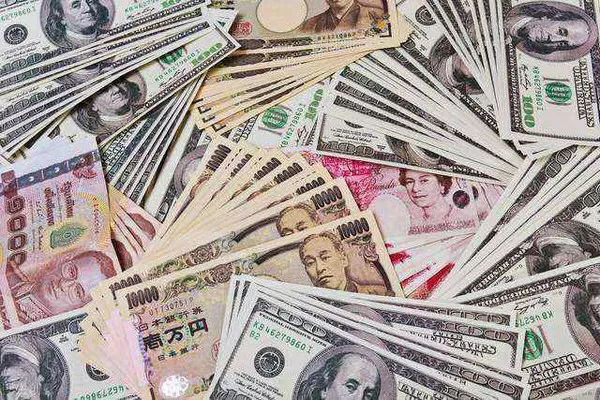The British pound coin, often referred to as the “pound sterling,” is not just a symbol of the United Kingdom’s rich history and economic stability but also a masterpiece in the world of numismatics. With its unique design, denomination, and security features, the British pound coin stands as a testament to the nation’s heritage and financial prowess. In this article, we will delve into the details of what a British pound coin looks like, highlighting its various aspects, from design to security.
Design Features
Obverse (Heads)
The obverse side of the British pound coin is colloquially referred to as “Heads.” This side features the effigy of the reigning monarch, capturing their image and name. The design of the effigy has undergone changes over the years as new monarchs ascend to the throne. Queen Elizabeth II’s portrait graced the obverse side of most circulating British pound coins. The effigies are generally in profile, capturing the dignity and regal demeanor of the monarch.
It’s essential to note that the British pound coin comes in various denominations, and the obverse design might differ slightly between them. For instance, the one-pound coin displays Queen Elizabeth II’s portrait, while other denominations such as the two-pound coin might feature different designs, like the Britannia or the Standing on the Shoulders of Giants motif.
Reverse (Tails)
The reverse side of the British pound coin is often referred to as “Tails.” This is the side of the coin where creativity and symbolism take center stage. British pound coins boast a wide range of distinctive and captivating designs on this side, celebrating the nation’s heritage, culture, and significant events. These designs are periodically changed, keeping the coins fresh and relevant.
One of the most iconic British pound coin designs is the “Royal Arms.” This design features the heraldic shield of the Royal Arms of the United Kingdom. It is a classic representation of the nation’s rich history and royal lineage, featuring a shield divided into four quarters, each showcasing a different emblem. Other designs may include national landmarks, famous figures, or symbols that hold cultural significance.
Denominations
The British pound coin comes in various denominations, each with a distinct design and size. As of my last knowledge update in September 2021, the most common denominations include:
One Pound (£1): The one-pound coin is perhaps the most widely recognized. It is a round coin with a smooth edge and a diameter of approximately 23.03 mm. The design on the reverse side of the coin is periodically updated to commemorate various national themes and events.
Two Pounds (£2): The two-pound coin is slightly larger and thicker than the one-pound coin, with a diameter of approximately 28.4 mm. These coins often feature unique designs and themes, making them popular among collectors.
Five Pounds (£5): Five-pound coins are less commonly used in everyday transactions and are usually issued as commemorative or collector’s coins. They are larger in size, with a diameter of approximately 38.61 mm. The designs on these coins are typically more elaborate and celebratory.
Ten Pounds (£10): Ten-pound coins are rarely encountered in circulation and are often reserved for special occasions or collector’s editions. These coins are relatively large, with a diameter of about 65 mm, and feature intricate designs.
It’s important to note that the designs and denominations of British pound coins can change over time, so it is advisable to check the latest updates from the Royal Mint or a reputable numismatic source for the most current information.
Security Features
The British pound coin is known for its robust security features, which are designed to deter counterfeiting and ensure the integrity of the currency. Some of the key security features include:
Bimetallic Construction: The one-pound and two-pound coins are bimetallic, meaning they consist of two different metals bonded together. This makes it difficult for counterfeiters to reproduce the coin’s appearance accurately.
Milled Edge: Many British pound coins have a milled or grooved edge, which is not only a distinctive feature but also serves as an anti-counterfeiting measure. The milling provides a tactile and visual cue that is difficult to replicate.
Micro-lettering: Micro-lettering, often found on the coin’s edge or within the design, is a feature that is challenging to replicate with precision. It typically contains inscriptions or patterns that are only visible under magnification.
Holograms and Color-Change Inks: Some special commemorative coins feature holograms and color-change inks, adding an extra layer of security. These features make it extremely difficult for counterfeiters to reproduce the coin accurately.
Hidden Features: The Royal Mint regularly incorporates hidden security features into coin designs. These can include tiny symbols or inscriptions that can be revealed with the use of a magnifying glass or ultraviolet light.
Circulation and Collectibility
British pound coins, especially those with unique and limited-edition designs, often become sought-after collector’s items. The Royal Mint releases commemorative coins and special editions to mark significant events, anniversaries, and cultural celebrations. These coins are designed to be cherished by collectors and can often be found in presentation sets or sold individually.
For those interested in numismatics, British pound coins offer a rich tapestry of history, art, and culture. Collectors often pursue specific series or themes, and the diversity of designs across different denominations and years provides ample opportunities for building a fascinating coin collection.
Conclusion
The British pound coin is not just a means of exchange; it’s a piece of art that reflects the rich history, culture, and heritage of the United Kingdom. From the elegant effigy of the monarch on the obverse to the captivating and ever-changing designs on the reverse, the pound coin embodies the nation’s identity. With robust security features and a variety of denominations, the pound coin continues to be a symbol of economic stability and a collector’s delight. Whether you encounter one in your daily transactions or add it to your collection, the British pound coin is a tangible piece of the UK’s history and culture.


